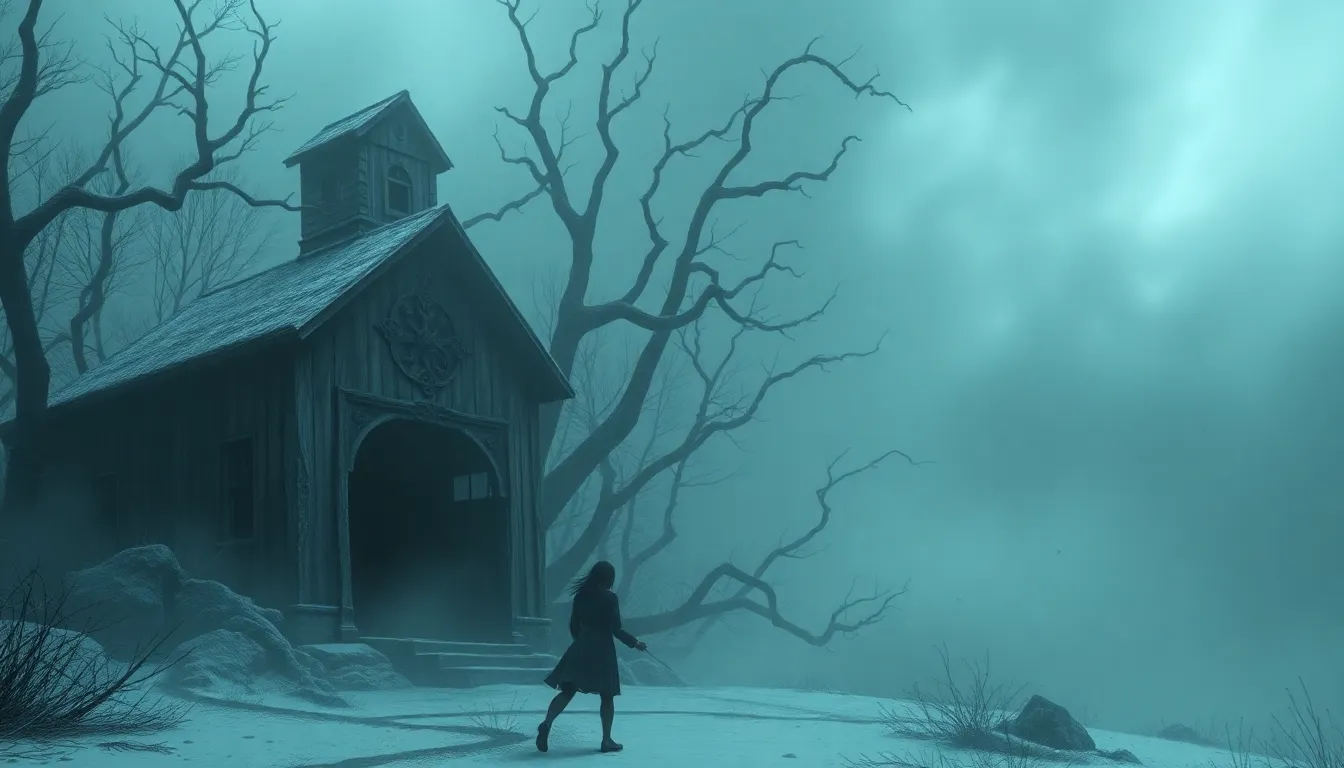The Most Haunting Curses in Folklore: What Can We Learn?
I. Introduction
Curses have long captivated the human imagination, appearing across cultures and time periods as ominous pronouncements, often invoking fear and superstition. In folklore, a curse is typically defined as a malevolent utterance or a magic spell intended to bring about misfortune or harm to an individual or group. These potent tales reflect not only the supernatural beliefs of societies but also their values, fears, and moral lessons.
Studying curses in their cultural contexts is essential for understanding how they shape beliefs and behaviors. This article explores the nature of curses, notable examples from around the world, their psychological and societal implications, and how they resonate in literature and media. In doing so, we aim to uncover the lessons that these haunting narratives can teach us about ourselves and the world we inhabit.
II. The Nature of Curses: Cultural Significance
Curses are woven into the fabric of many cultures, serving various purposes from warnings to moral lessons. They often encapsulate societal fears and reflect cultural values, acting as a form of social control. Here are some key aspects of curses across cultures:
- Universal Themes: Many cultures share common themes in curses, such as betrayal, revenge, and the consequences of hubris.
- Ritualistic Elements: Curses often involve rituals, which can range from simple spoken words to complex ceremonies.
- Symbolic Significance: Objects or symbols used in curses can carry deep cultural meanings, representing fears or moral lessons.
The psychological impact of curses can be profound. They can instill fear, provoke anxiety, and affect behavior. Belief in curses can lead to self-fulfilling prophecies, where individuals act in ways that bring about their own misfortune due to fear of a curse. Ultimately, curses serve as reflections of societal morals and fears, illustrating what a community values or fears most deeply.
III. Notable Curses from Around the World
Several curses have gained notoriety over the years, each with its own unique story and implications:
A. The Curse of the Pharaohs in Ancient Egypt
This infamous curse is said to affect those who disturb the tombs of the ancient Egyptian pharaohs. Following the discovery of Tutankhamun’s tomb in 1922, several individuals associated with the excavation reportedly met untimely deaths, fueling the belief in a protective curse.
B. The Legend of the Bell Witch in American Folklore
The Bell Witch is a well-known tale from the early 19th century in Tennessee, where a spirit tormented the Bell family. The witch allegedly cursed the family, leading to illness and tragedy, and remains a popular story in American folklore.
C. The Curse of the Hope Diamond
Legend has it that the Hope Diamond brings misfortune to its owners. Many of its previous owners faced tragic ends, leading to the belief that the diamond is cursed. The story has transcended generations, captivating those interested in the supernatural.
D. The Mummy’s Curse: Myths vs. Reality
The idea of a mummy’s curse gained traction in the early 20th century following various discoveries in Egypt. Although many deaths were attributed to the curse of the pharaohs, scientific investigations have often debunked these claims, attributing them to natural causes and coincidence.
IV. The Mechanics of a Curse
The activation of a curse often involves specific beliefs and rituals. Here are some key components:
- Belief System: A curse is usually activated by the belief of the person it is aimed at or the community surrounding them.
- Rituals and Symbolism: Many curses involve rituals that may include incantations, the use of specific objects, or the invocation of spirits.
- Psychological Factors: The power of suggestion can lead individuals to perceive events as cursed, reinforcing their belief.
V. Case Studies: Famous Cursed Individuals
Some individuals have become synonymous with curses, often facing tragic fates:
A. The Tragic Fate of Robert Johnson, the Blues Legend
Robert Johnson, a legendary blues musician, is said to have made a deal with the devil at a crossroads, leading to his untimely death at 27. His story illustrates how curses and legends intertwine with artistic genius and tragedy.
B. The Life of Actress Jean Harlow and the Alleged Harlow Curse
Jean Harlow, a Hollywood icon, was rumored to be cursed after several of her close friends and husbands met tragic ends. Her life and the subsequent speculation about a curse reflect societal fascination with fame and its potential consequences.
C. The Story of the Poltergeist Film Series and Its Cast
The Poltergeist film series is infamous for its supposed curse, as several cast members encountered untimely deaths. This narrative has sparked discussions about the intersection of horror films and real-life tragedies.
VI. The Role of Curses in Literature and Media
Curses have played a significant role in literature and media throughout history:
A. Analysis of Curses in Classic Literature
Classic works, such as Shakespeare’s plays and Greek tragedies, frequently feature curses as pivotal plot devices. These narratives often explore themes of revenge, fate, and moral consequences.
B. Modern Interpretations of Curses in Film and Television
In contemporary media, curses continue to be a popular theme, often depicted in horror movies and TV shows, reflecting societal anxieties and fears.
C. The Impact of Cursed Narratives on Popular Culture
Cursed narratives have transcended literature and media, influencing fashion, art, and even tourism, as people seek out cursed places and objects.
VII. Psychological and Social Lessons from Curses
Curses can serve as powerful metaphors for personal and societal issues. Here are some lessons we can draw:
- Metaphors for Struggle: Curses often symbolize deeper personal or societal struggles, such as guilt, betrayal, or injustice.
- Self-Fulfilling Prophecies: The belief in a curse can lead individuals to act in ways that manifest the very outcomes they fear.
- Influence on Behavior: Belief in curses can shape decision-making, leading individuals to avoid certain actions or places.
VIII. Debunking Curses: Rational Explanations
Many supposed curses can be explained through rational thinking:
A. The Role of Coincidence and Confirmation Bias
Often, events attributed to curses can be explained by coincidence. Confirmation bias also plays a role, as people tend to remember events that support the curse narrative while ignoring those that do not.
B. Scientific Investigations into Cursed Phenomena
Scientific studies have often debunked the existence of curses, providing evidence that many so-called cursed events can be explained through natural phenomena or psychological factors.
C. The Importance of Critical Thinking in Folklore Studies
Critical thinking allows us to analyze stories of curses without succumbing to superstition, encouraging a deeper understanding of cultural narratives.
IX. Resilience and Empowerment: Breaking the Curse Cycle
Despite the ominous nature of curses, historical examples show that individuals and communities can overcome them:
A. Historical Examples of Overcoming Curses
Throughout history, many individuals have defied the odds associated with curses, demonstrating resilience and the power of belief in positive outcomes.
B. Strategies for Individuals to Reclaim Power from Curses
Individuals can reclaim their power through various strategies, such as:
- Positive Affirmations: Reinforcing positive beliefs can counteract the negative effects of perceived curses.
- Seeking Support: Community and social support can provide strength in times of doubt or fear.
- Education: Learning about the origins of curses can demystify them and reduce their psychological impact.
C. The Importance of Community and Support
Community plays a crucial role in helping individuals overcome the belief in curses. By fostering a supportive environment, communities can empower individuals to break free from the cycle of fear and superstition.
X. Conclusion
Curses are more than mere superstitions; they are powerful narratives that reflect cultural beliefs, fears, and moral lessons. By examining the significant role of curses in folklore



